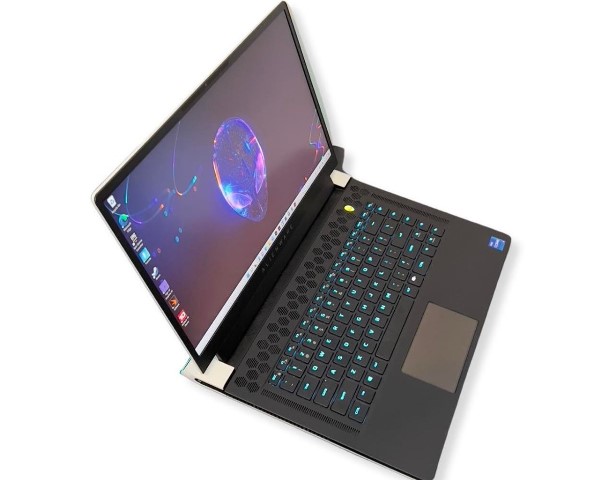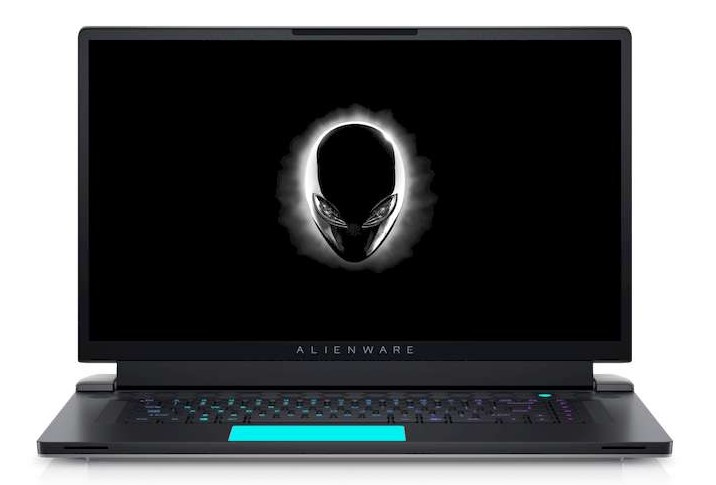
Review of the Asus TUF Gaming VG279QM, an almost perfect 27-inch screen for video games
We’ve been looking for a 27-inch, Full HD or 1440p gaming monitor for several months. With strict criteria in mind, namely that its price does not exceed $ 500 USD and that its panel is refreshed to more than 144 Hz. Not easy to find.
Especially since we were looking for a candidate whose height can be adjusted, rotatable in all directions and has round feet. Or rectangular at worst. Indeed, the screen feet in Y, it’s beautiful, it’s modern, but it takes up too much space on the desk.
After hours of research, the Asus TUF Gaming VG279QM came to us as the right choice. On paper, anyway. Its base is rectangular and it costs between 410 and 440 euros depending on the brand. It also offers a whole set of ergonomic settings and it is compatible with G-Sync, Free-Sync, A-Sync .
Supports ELMB and LFC technology
Better yet, This VG279 supports ELMB and LFC technology (see sidebar). Its matte IPS panel is refreshed to 240Hz base and can be pushed to 280Hz via the display menu as needed. It’s even HDR 400 compatible . Wow! Finally, it is thin-rimmed and does not have LEDs everywhere unlike some gaming monitors. So much the better!
See Also : Razer Raptor 27 Monitor review
This screen can be assembled in 2 minutes. You take it out of the box, you screw the base to the foot with t
he hand screw and voila, it is ready to take service.
The presence of ELMB, LFC and the absence of PWM are appreciated
PWM or Pulse Width Modulation
This is a technology dedicated to adjusting the brightness of the panel and which is a vector of flickering. The Asus display doesn’t have one, and that’s good news for sensitive people.
And even for others, the eyes do not sting and do not cry, even after hours in front of the slab.
ELMB or Extreme Low Motion Blur : a processor hidden in the screen analyzes the scanning of the backlight and quickly turns it off, causing “black images” to be inserted between the images generated by the graphics card to maintain the impression of fluidity display.
LFC or Low Framerate Compensation
This process multiplies the display time of the images on the screen (x2, x3, x4) in order to maintain an artificially high refresh rate when the G-Sync and the FreeSync drop below a certain level for maintain perfect fluidity in all circumstances.
for example: G-Sync is activated on the screen and suddenly in a game the frame rate per second drops to 25 fps. Normally, the screen should then lower its speed to 25 Hz. As it is technically limited to 53 Hz, slowdowns or tearing are likely to occur.
To avoid this, the LFC kicks in and makes the electronics believe that it is not 25 images but many more, in any case enough to cross the technical limit of the panel and force it to go up at a higher speed, which thus limits visual disturbances.
Settings Asus TUF Gaming VG279QM
Once the VG279QM is positioned on the desk, the cables are passed through the hole provided for this purpose at the base of the stand, removing the small plastic hatch and repositioning it afterwards. Don’t worry, there’s room for three worry-free video cables.
Luckily, the VG279QM offers three video inputs (2 x HDMI 2.0 and 1 x DisplayPort 1.4) and a headphone output, all facing down. Good !
USB Port
There is no USB plug and honestly we don’t find that to be a big deal. Some people probably like plugging keys or webcams into their screens. This is not our case.
Reaching out to the side to insert a USB device into the front of our tower is still feasible. If this is important for you, the 279QM does not have one at all, so you will have to turn to one of the models that we will mention below (from LG or Samsung).
Power Consumption
This 27 inch is fed by an external block, small in size but in the classic format (i.e. a wire, followed by the block, then again a wire). Sacrilege! Given the consumption of the screen – 35 watts maximum – Asus could still have made the effort to design a power supply like smartphone charger.
However, using an external block has the advantage of allowing an easier and faster change in the event of a breakdown.
Adjusted Position
Everything is plugged in, it’s time to adjust the height, tilt and position of the slab. And there it is … the foot. The slab rises and falls enough to end up either flush with the desk or more than 13 cm above the top.
The tilt angle is large enough to find the correct position. And if you want to use it vertically rather than horizontally, you can. The slab rotates 90 °. The connectors are then turned to the left.
Finally, the pivot present at the base of the base allows the foot and the screen to be rotated together. Nothing to say, it’s perfect.
Menu & Navigation Asus TUF Gaming VG279QM
After the physical adjustments, we move on to the software settings. It is accessed through a small joystick hidden behind, to the right of the screen, where the power button is also located. We quickly navigate the menus.
There are all the usual parameters (brightness, contrast, etc.) but also preprogrammed profiles which bear the name of types of games (strategy, race, FPS) or color adjustment (sRGB).
Among the options dedicated to gaming, there is the GamePlus to display times, sights and other elements superimposed on the screen but also the Shadow Boost which brightens to the extreme the dark shades.
Navigation
First-person shooters will appreciate being able to make the shadows less dark to flush out potential “wild camping” enthusiasts. Also note the presence of a Vivid function which allows you to force the contours of certain objects with less success (see above, Vivid at 0 on the left, at 100 on the right).
However, we have two complaints against the OSD. The first, it is impossible to configure the passage from one video input to another on one of the two shortcut buttons at the back. It is therefore impossible to switch from one entrance to another in the blink of an eye.
The second criticism relates to the lack of gamma (white level) adjustment in the menu regardless of the profile. It is rare enough to be noted and surprised. A smooth transition to approach the results of the measurements.
More contrasted, the 27-inch slab was full
The TUF Gaming VG279QM had the right to its ritual passage under the probe of the lab and it offers us a good performance overall but it is not full success.
We tested the screen for the first time in Landscape mode , the default profile when it came out of the box. We simply printed it our classic settings for measurements and this is what it looks like.
Brightness
Maximum and peak average brightness was measured at 440 cd / m 2 and 441 cd / m. The maximum average contrast ratio was raised to 1143: 1. Color fidelity drops to 2.3 (Delta E sRGB) or 3.04 (Delta E DCI-P3) and gamma peaks at 2.18. Let’s not forget a crucial measurement for gaming, the response time (black / white) is 9 ms.
We change mode to see! With the FPS profile , always calibrated with our settings, the situation changes drastically. Especially in terms of brightness: 244 cd / m 2 maximum average and 278 cd / m 2 peak. The contrast ratio is also down, 1093: 1.
What these numbers tell us:
- The brightness is really good and the setting offers great responsiveness in the OSD menu of the screen so that it can be adjusted very easily.
- The contrast ratio is not very good. A classic on IPS but it is important to underline it. According to our rating scale, he does not obtain the average (3/10).
- The homogeneity of the panel is relatively good, even if we note that some areas are less well backlit than others.
- The gamma : the grays are a little imprecise at times – plugged as we say. But the gamma level has the merit of being constant throughout the test
- The colorimetry is accurate, almost impeccable. The delta E is close to 2 (the closer to 0 the better), a very good point for a gaming screen … which can also be used to edit photos or create graphic content.
- The response time is good for IPS, not known to be the most responsive technology out there.
We did not observe any annoying ghosting or ghosting effects except when overclocking the panel is pushed too far. There, it is reverse ghosting which appears and which can disturb the most sensitive pupils.
We did not notice any clouding either (white spots clearly visible on a black screen) despite the perfectible homogeneity of the panel. No light leaks at the frame level either: Asus has almost everything.
Unexpected duels
Competition in the 27-inch market is fierce. Even fierce. We have therefore drawn on the latest models received at the editorial office and which seem to us the most able to compete in terms of price and / or technical sheets with the Asus TUF VG279QM.
We have chosen two: the Samsung C27RG50FQU at first. Very affordable but which clearly does not compare in terms of ergonomics.
Driver Download for Asus TUF VG 279 QM > Download

